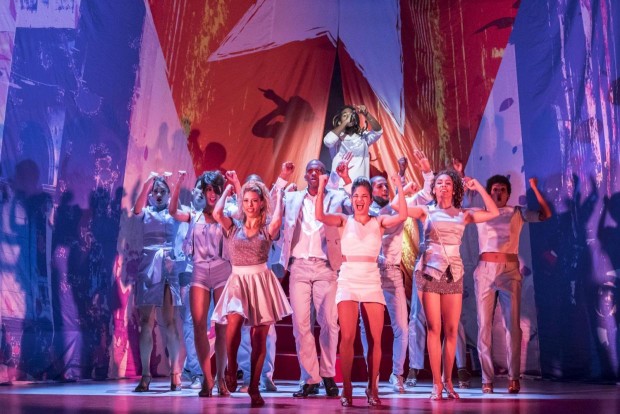You have no items in your cart. Want to get some nice things?
Go shopping
We all like a good story. The reliable arch of a narrative is what impels us to read, to go to the theatre, to write. For this reason I will always love the ballets of Tchaikovsky and Prokofiev, their fairy tales and takes on Shakespeare. Of course, this attitude to ballet leaves me open to the criticism of George Balanchine – one of the world’s most celebrated choreographers, and co-founder of the New York City Ballet – who once despairingly observed to Peter Martins: “You know, dear, we should call all ballets Swan Lake. That way, [p]eople will come.”
Balanchine made famous the “neoclassical” style of twentieth century ballet, a style which eschewed narrative and characterization in favour of mood and technical accomplishment. Dancers, he explained, are “like flowers. A flower doesn’t tell you a story. It’s in itself a beautiful thing.’ Fiddly plot-points are dismissed in Balanchine’s neoclassical choreography, as are elaborate sets and unnecessary props. According to him, “[t]here are no mothers-in-law in ballet”.
You can watch Stravinsky’s Violin Concerto in D – choreographed by Balanchine – on YouTube; on doing so I found myself bewildered and wrong-footed and stunned in the space of twenty minutes. It is the perfect meeting of movement and music (or, as he described it much more eloquently, it is the type of dance in which “music is made visible”). I can’t pretend to comprehend it.
I thought that Nilda Guerra’s Vamos Cuba! at Sadler’s Wells, with its “exuberant mix of traditional and modern dance styles” (according to its press release), might also be beyond my comprehension. I will admit, I know next to nothing about rumba and cha-cha-cha. What I do know is a sad flop of a storyline when I see one.
This whisper of a narrative is set in an airport departure lounge in Havana, where female tourists are accosted by janitors, and stewardesses twitch tight-skirted bottoms before pilots and businessmen. Such a weak attempt at romance is made further troubling by the overt sexualisation of the women, who switch between nude body-stockings, tiny dresses, and gowns of virginal white; the story follows their attempts to withstand the attention of the men. I’m sure Balanchine wouldn’t approve of this. “In my ballets, woman is first,” he said. “[Women] are not equal to men: they are better.” Women certainly aren’t equal to men in the world of Vamos Cuba!, despite Guerra’s insistence to the contrary. In a recent interview she observed that: “[I]n Cuban society, everything is about men manipulating women – it is normal in our culture. All the popular dances are like that. What I am interested in is keeping the energy of the dance but finding a conversation between the couple.”
The conversation here is a stilted one, lurching from scene to increasingly ridiculous scene (at one point the passengers show us the contents of their suitcases: as tiresome as it sounds). The characterisation lapses too frequently into stereotype, and there is nothing especially memorable in the choreography itself, no moments of innovation or breath-taking spectacle. Nevertheless, many of the dancers showed technical prowess, and a couple of the numbers – the reggaeton scene, especially – inspired a theatre-wide feeling of exhilaration. The live band and the interpolations of singer Geydi Chapman gave the performance a much-needed injection of personality.
Vamos Cuba! is not, as I had hoped, a daring blend of dance styles, nor does it convey the personal narratives of Havana in a meaningful way. The production is intended as an invitation to experience Cuban culture, but, true to its purgatorial setting, it feels as though we are witnessing the stories of Cuba through the windows of its airport.
<em>Vamos Cuba!</em> continues at Sadler’s Wells until Aug 21. Tickets from £12.

About Xenobe Purvis
Xenobe is a writer and a literary research assistant. Her work has appeared in the Telegraph, City AM, Asian Art Newspaper and So it Goes Magazine, and her first novel is represented by Peters Fraser & Dunlop. She and her sister curate an art and culture website with a Japanese focus: nomikomu.com.




